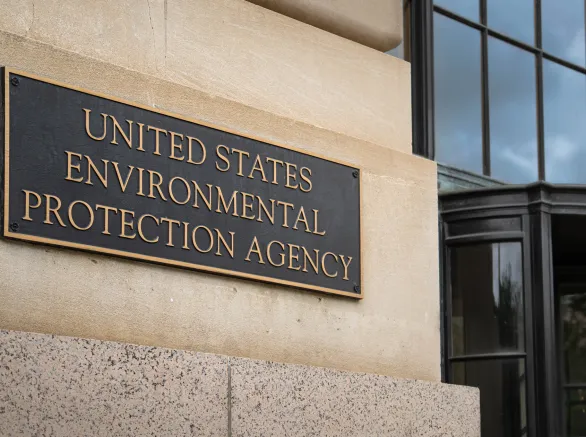(J.K. Anderson also Published as J.K. Hess-Wilson)
Bowles KC, Anderson JK, Anderson R, Bani B, Barnes CM, Brusseau M, Cousins IT, Cushing P, DiGuiseppi B, Gray B, Higgins CP. Implications of grouping per-and polyfluoroalkyl substances for contaminated site regulation. Remediation Journal 2024; 34(3):e21783.
Anderson JK, Schneider D, Knutson M, Puchacz Z. 2023. PFAS source differentiation guide for airports (No. ACRP Project 02-91). National Academies of Sciences, Engineering, and Medicine, Washington, DC: The National Academies Press. https://doi.org/10.17226/27164
Lafranconi M, Anderson JK, Budinsky R, Corey L, Forsberg N, Klapacz J, LeBaron MJ. An integrated assessment of the 1, 4-dioxane cancer mode of action and threshold response in rodents. Regulatory Toxicology and Pharmacology 2023; 105428.
Garvey GJ, Anderson JK, Goodrum PE, Tyndall KH, Cox LA, Khatami M, Morales-Montor J, Schoeny RS, Seed JG, Tyagi RK, Kirman CR. Weight of evidence evaluation for chemical-induced immunotoxicity for PFOA and PFOS: findings from an independent panel of experts. Critical Reviews in Toxicology 2023; 53(1):34 — 51.
Anderson JK, Brecher RW, Cousins IT, DeWitt J, Fiedler H, Kannan K, Kirman CR, Lipscomb J, Priestly B, Schoeny R, Seed J. Grouping of PFAS for human health risk assessment: Findings from an independent panel of experts. Regulatory Toxicology and Pharmacology 2022; 134:105-226.
Fey ME, Goodrum PE, Razavi NR, Whipps CM, Fernando S, Anderson JK. Is mixtures' additivity supported by empirical data? A Case Study of Developmental Toxicity of PFOS and 6:2 FTS in Wildtype Zebrafish Embryos. Toxics 2022; 10(8):418.
Guelfo JL, Korzeniowski S, Mills MA, Anderson JK, Anderson RH, Arblaster JA, Conder JM, Cousins IT, Dasu K, Henry BJ, Lee LS. Environmental sources, chemistry, fate and transport of per‐and polyfluoroalkyl substances: State of the Science, Key Knowledge Gaps, and Recommendations Presented at the August 2019 SETAC Focus Topic Meeting. Environmental Toxicology and Chemistry, 2020.
Zodrow J, Vedagiri U, Sorell T, McIntosh L, Larson E, Hall L, ... Anderson JK. PFAS experts symposium 2: PFAS toxicology and risk assessment in 2021 — contemporary issues in human and ecological risk assessment of PFAS. Remediation Journal 2022; 32(1 — 2):29-44.
Goodrum PE, Anderson JK, Luz AL, Ansell GK. Application of a framework for grouping and mixtures toxicity assessment of PFAS: a closer examination of dose-additivity approaches. Toxicological Sciences 2021; 179(2):262 — 278.
Mohr TK, DiGuiseppi WH, Hatton JW, Anderson JK. 2020. Environmental investigation and remediation: 1, 4-dioxane and other solvent stabilizers. CRC Press.
Iwai H, Hoberman AM, Goodrum PE, Mendelsohn E, Anderson JK. Addendum to Iwai and Hoberman — Reassessment of developmental toxicity of PFHxA in mice. Internat J Tox. 2014; 38(3):183 — 191.
Anderson JK, Luz AL, Goodrum P. Response to "Overgeneralization by Anderson et al. and Luz et al. regarding safety of fluorotelomer-base chemistry". Reg Tox Pharm. 2019; 105:100 — 101.
Anderson JK, Luz AL, Goodrum P, Durda J. Perfluorohexanoic acid toxicity, part II: application of human health toxicity value for risk characterization. Reg Tox Pharm. 2019; 103:10 — 20.
Luz AL, Anderson JK, Goodrum P, Durda J. Perfluorohexanoic acid toxicity, part I: development of a chronic human health toxicity value for use in risk assessment. Reg Tox Pharm. 2019; 103:41 — 55.
Anderson JK, Wilhelm J, Goodrum P. Emerging contaminants: an analysis of inconsistent U.S. regulations. Daily Environment Report. Bloomberg Bureau of National Affairs. August 2016.
Anderson RH, Long GC, Porter RC, Anderson JK. Occurrence of select perfluoroalkyl substances at U.S. Air Force aqueous film-forming foam release sites other than fire-training areas: field-validation of critical fate and transport properties. Chemosphere 2016; 150:678 — 685.
Anderson RH, Anderson JK, Bower PA. Co-occurrence of 1,4-dioxane with trichloroethylene in chlorinated solvent groundwater plumes at U.S. Air Force installations; fact or fiction. Integr Environ Assess Manag. 2012; 8(4):731 — 737.
Wang NCY, Zhao QJ, Wesselkamper SC, Lambert JC, Peterson D, Hess-Wilson JK. Application of computational toxicological tools and approaches in human health risk assessment I. A tiered surrogate approach. Regul Toxicol Pharmacol. 2012; 63:10 — 19.
Thomas RS, Clewell HC, Allen BC, Wesselkamper SC, Wang NY, Lambert JC, Hess-Wilson JK, Zhao QJ, Andersen ME. Application of transcriptional benchmark dose values in quantitative cancer and noncancer risk assessment. Toxicol Sci. 2011; 120(1):194 — 205.
Mazur CS, Kenneke JF, Hess-Wilson JK, Lipscomb JL. Differences between human and rat intestinal and hepatic bisphenol A glucuronidation and the influence of alamethicin on in vitro kinetic measurements. Drug Metab Dispos. 2010; 38(12):2232 — 2238.
Hess-Wilson JK. Bisphenol A may reduce the efficacy of androgen deprivation therapy in prostate cancer. Cancer Causes and Control 2009; 20(7):1029 — 1037.
Shah S, Hess-Wilson JK, Webb S, Daly H, Godoy-Tundidor S, Kim J, Boldison J, Daaka Y, Knudsen KE. 2,2-Bis(4-chlorophenyl)-1,1-dichloroethylene stimulates androgen independence in prostate cancer cells through combinatorial activation of mutant androgen receptor and mitogen-activated protein kinase pathways. Mol Cancer Res. 2008; 6(9):1507 — 1520.
Hess-Wilson JK, Webb SL, Daly HK, Leung YK, Boldison J, Comstock CES, Sartor MA, Ho SM, Knudsen KE. Unique bisphenol A transcriptome in prostate cancer: novel effects on ERβ expression that correspond to AR mutation status. Environ Health Perspect. 2007; 115(11):1646 — 1653.
Sharma A, Knudsen ES, Hess-Wilson JK, Morey LM, Barrera J, Knudsen KE. Retinoblastoma tumor suppressor status is a critical determinant of therapeutic response in prostate cancer cells. Cancer Res. 2007; 67(13):6192 — 6203.
Hess-Wilson JK, Daly HK, Zagorski WA, Montville CP, Knudsen KE. Mitogenic action of the androgen receptor sensitizes prostate cancer cells to taxane-based cytotoxic insult. Cancer Res. 2006; 66(24):11998 — 12008.
Wetherill YB*, Hess-Wilson JK*, Comstock CES, Shah SA, Buncher CR, Sallans L, Limbach PA, Schwemberger S, Babcock GF, Knudsen KE. Bisphenol A facilitates bypass of androgen ablation therapy in prostate cancer. Mol Cancer Ther. 2006; 5(12):3181 — 3190. *Co-first authors.
Hess-Wilson JK, Boldison J, Weaver KE, Knudsen KE. Xenoestrogen action in breast cancer: impact on ER-dependent transcription and mitogenesis. Breast Cancer Res Treat. 2006; 96(3):279 — 292.
Hess-Wilson JK, Knudsen KE. Endocrine disrupting compounds and prostate cancer. Cancer Lett. 2006; 241(1):1 — 12 — Invited review.
EPA Documents
USEPA. 2011. Volume I. EPA's re-analysis of key issues related to dioxin toxicity and response to NAS comments. Final review draft. EPA/600/R-10/038F. U.S. Environmental Protection Agency, Washington, DC. Contributing author.
USEPA. 2010. Provisional Peer-Reviewed Toxicity Values for 1,2-Dichloroethane (CASRN 107-06-2). EPA/690/R- 10/011F. Superfund Health Risk Technical Support Center, National Center for Environmental Assessment, Office of Research and Development, U.S. Environmental Protection Agency, Cincinnati, OH. Chemical Manager
USEPA. 2010. Recommended toxicity equivalence factors (TEFs) for human health risk assessments of 2,3,7,8- tetrachlorodibenzo-p-dioxin and dioxin-like compounds. EPA/100/R 10/005. U.S. Environmental Protection Agency, Risk Assessment Forum, Washington, DC. Coauthor.
Presentations
Anderson JK. 2021-2025. 1,4-Dioxane: Science, Characterization & Analysis, and Remediation; Regulatory Framework, and Toxicology and Risk Assessment Modules. EPA CLU-IN Training.. Available online: https://clu-in.org/conf/itrc/14D-1/
Anderson JK. IUPAC Project no. 2024-006-3-100. Terminology and Classification of Per- and Poly- Fluoroalkyl substances (PFAS). "The Dose Makes the Poison, Not the Name." Invited Speaker. December 5, 2024.
Anderson JK. Changing landscape related to PFAS, TSCA, and product liability. Invited Speaker, 36th Annual Product Liability Conference, University of Wisconsin-Madison, October 15, 2024.
Anderson JK, Moore L, Nastich S, Rosen S. The PFAS paradox. Invited Session Chair and Speaker, 33rd Annual Environmental Law Conference at Yosemite, September 14, 2024.
Anderson JK. State- of-the-science and data gaps associated with fluoropolymers. Invited Speaker, U.S. Environmental Protection Agency, Toxic Substances Control Act PFAS Workshop, February 13, 2024.
Anderson JK. PFAS human health risk: what are the potential community impacts to low levels. 91st Annual Meeting of the United States Conference of Mayors, Columbus, OH. June 3, 2023.
Anderson JK. The PFAS circus — science, regulations, legal implications. Webinar, the Dallas Bar Association, Environmental Law CLE Program, March 23, 2023.
Anderson JK. What's your proximity to the PFAS problem? National Turkey Federation Annual Meeting, Technical and Regulatory Committee Session, Palm Springs, CA. February 25, 2023.
Anderson JK. National Groundwater Association, PFAS Conference — PFAS and the Toxicological Challenges it (sic) Presents; PFAS Toxicology Overview and Challenges. Webinar. June 22, 2022.
Anderson JK. PFAS regulatory overview and challenges. Panel Presentation, US Conference of Mayors, 90th Annual Meeting, June 3, 2022.
Anderson JK. Overview of site-specific baseline risk assessments: what are the key variables & uncertainties for characterizing PFAS risk to receptors. Presentation, NEWMOA, The Science of PFAS Conference, April 5, 2022.
Anderson JK. Distilling the facts from fiction: how to identify and manage PFAS risks in CRE transactions. PFAS toxicology and regulatory overview. ERIS Webinar, February 8, 2022.
Whitehead K, Anderson JK, Skaggs J, Williams P. Microplastics as emerging contaminants. Webinar, Austin Bar Association, October 2021.
Anderson JK. PFAS state of the science. Webinar, National Groundwater Association, June 2021.
Anderson JK, Dell L. PFAS Experts Symposium 2, Remediation Journal. Toxicology and Risk Assessment Committee: Human Health Effects. June 29, 2021. Webinar
Anderson JK. PFAS: state of the science: health, human exposure and toxicological aspects. Webinar, National Groundwater Association, Fate of PFAS: from Groundwater to Tap Water Conference, June 22, 2021.
Anderson JK. PFAS regulations under the new administration. Webinar, Dallas Bar Association, May 27, 2021.
Anderson JK. PFAS the "Forever Chemical" that may be impacting your operations. Webinar, AFS 32nd Environmental, Health and Safety Conference, October 6, 2020.
Anderson JK, Goodrum P. PFAS: toxicology and regulatory actions. Webinar to the ACC Public Health Advisory Board, November 7, 2019.
Anderson JK. Federal and state environmental guidance/policies that impact remedial decisions for PFAS. Platform presentation at the Washington State Advanced Superfund Conference, Seattle, WA, September 12, 2019.
Anderson JK. PFAS: risk characterization panel. Invited panelist to the Society of Environmental Toxicology and Chemistry North America, Focused Technical Meeting on PFAS, Durham, NC, August 2019.
Opdyke D, Benaman J, Anderson JK, Durda J. An introduction to PFAS at contaminated sediment sites: Scientific and regulatory overview. Short course at Tenth International Conference on the Remediation and Management of Contaminated Sediments, New Orleans, LA, February 11 — 14, 2019.
Luz AL, Tolbert L, Anderson JK, Goodrum P, Farrar D, Korzeniowski S. PFHxA human health risks, margin of safety, and comparison with PFOA. Platform presentation. Society of Environmental Toxicology and Chemistry North America 39th Annual Meeting, Sacramento, CA, November 4 — 8, 2018.
Anderson JK. Emerging contaminants — per-and polyfluoroalkyl substances: a case study. Invited speaker, Texas Environmental Superconference, Austin, TX, August 2018.
Anderson JK. Uncertainty in the science of toxicology and emerging contaminants. Remediation of Emerging Contaminants: Trends in Science and Regulations. Montclair State University Continuing Education Course, June 2017.
Anderson JK. Why the inconsistent and dynamic state and federal chemical regulatory landscape. RTM Communications Conference, Philadelphia, PA, April 2017.


